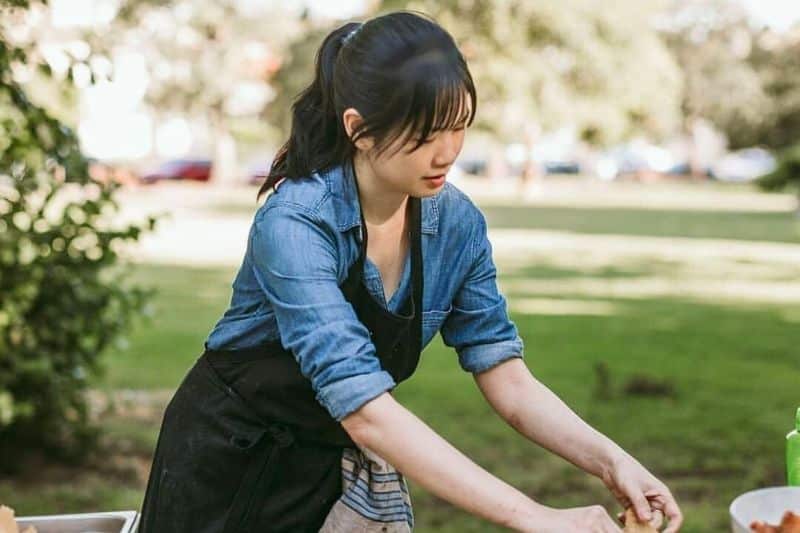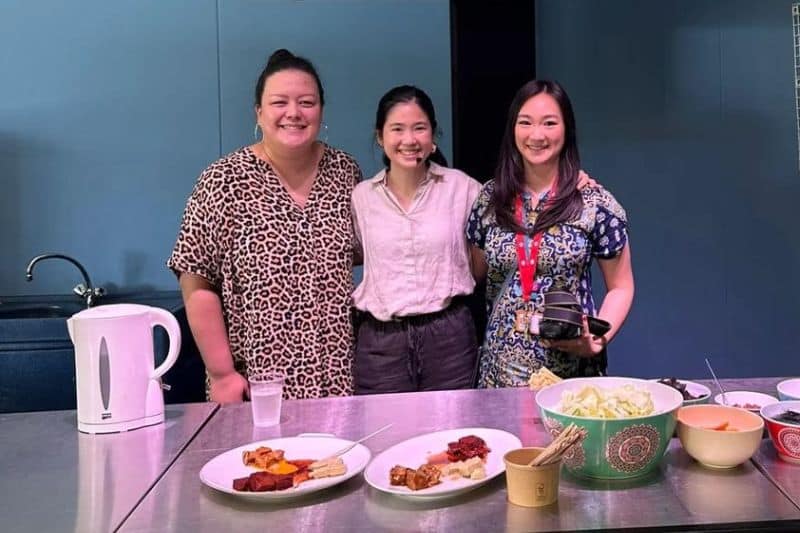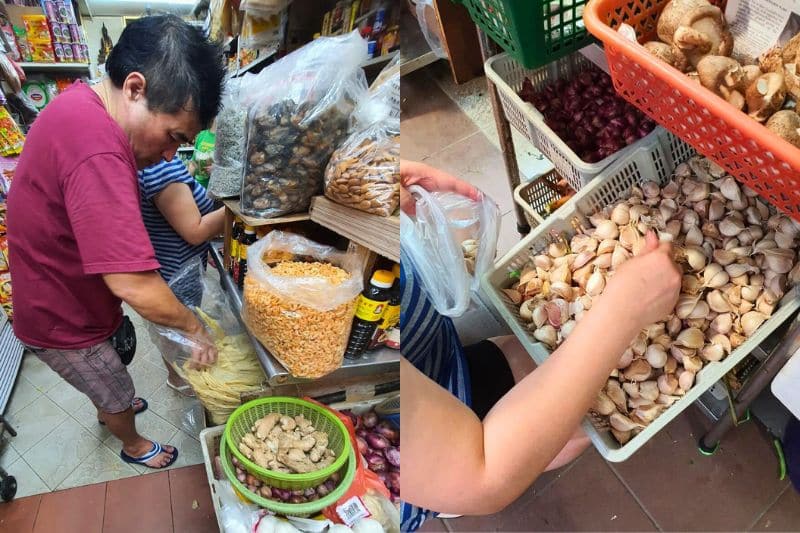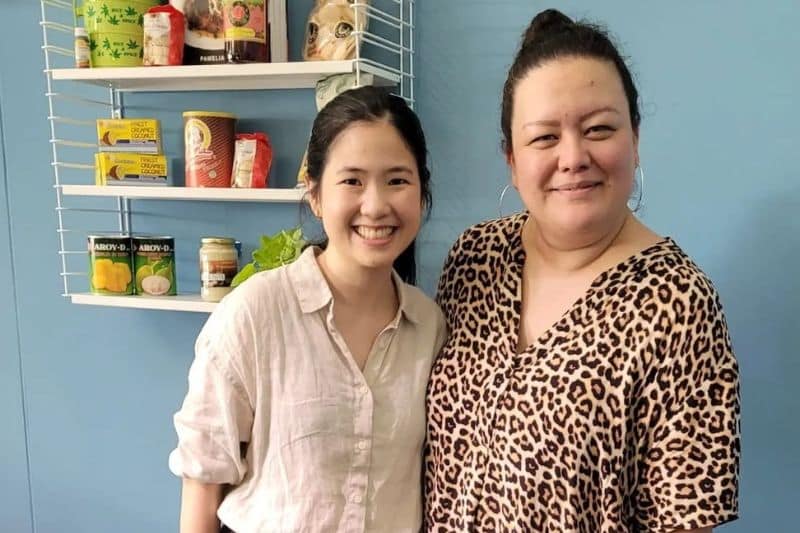Meet Pamelia Chia, the culinary maven hailing from Singapore, whose journey from a Food Science and Technology graduate to a cook and writer is a testament to her passion for preserving traditions.
Meet Pamelia Chia, a guardian of culinary traditions and the author of bestsellers Wet Market to Table and PLANTASIA. In an exclusive interview with Hive Life, she shares her inspiring journey, emphasising her commitment to preserving Singapore’s culinary heritage.
Pamelia’s advocacy for sustainability takes centre stage as she discusses the significance of wet markets. Beyond mere shopping spaces, she sees them as vital guardians of biodiversity and cultural hubs fostering human connections. Her passion extends to treating vegetables with the respect they deserve, challenging the notion that they play second fiddle to meat.
Join us on this culinary expedition with Pamelia Chia, where tradition, sustainability, and a profound love for vegetables converge in a symphony of flavours and cultural richness.

Can You Tell Us About Your Journey from Graduating in Food Science and Technology to Becoming a Cook and Writer?
I studied Food Science and Technology in school. I was very passionate about cooking, but my mom insisted that I had to get a degree and that felt like the most relevant thing to my interests. After school, I did an internship at a flavour house. I felt that that work was not for me. It just felt very mundane to be sitting in front of a computer, analysing data. And so after that, I decided to just start working as a cook.
I had no formal training. I just learned on the job and read lots of books and cooked lots of food at home. And, that’s how I became a chef.
I worked as a chef for about five years. Then, I started writing my cookbook when I was working as a chef because back then, when I was working in this restaurant called Candlenut, we had a four day workweek. So, I had three days free and I started writing Wet Market To Table, just because I felt very convicted of the need to understand my own roots. And also the kind of ingredients in our region.
And then when Covid came I made the decision to pivot away from the F&B industry, and start focusing more on writing. So, I started Singapore Noodles, which is a newsletter that is all about celebrating and preserving Singaporean food traditions.

What Was It Like Publishing Your First Cookbook?
My first cookbook was published with Epigram Books in Singapore. I basically had the idea for it and I just sent them a cold email. I just pitched to them. I honestly didn’t know how it worked, because even though I consumed lots of cookbooks, I had no understanding of the behind the scenes. So, I was very surprised to receive an email back indicating that they were interested.
The whole writing process took about one year from start to finish. And then another year for the editing and things like proofreading.
The first year of the process of writing the cookbook was pretty much me going to different wet markets in Singapore on my days off, and I would pick out ingredients that I had never seen before, never cooked with before. And bring them into my kitchen and try to cook them in ways that excite me.
I wanted to show the versatility of these vegetables. So I created a cookbook that was exciting and modern and accessible to young readers because I feel that if young people do not go to the wet markets, what chance do they have of surviving in the next few decades.
What Are Some Exciting Food Trends Related to Asian Vegetarian Cuisine that You’ve Observed While Working on PLANTASIA?
I have to preface that PLANTASIA, even though it’s a vegetarian cookbook, I really wrote it for the meat lovers and seafood lovers. Just because I feel that writing for vegetarians is kind of like preaching to the choir. The main mission of the book is not to convert people to vegetarianism or veganism, per se, but it’s really to provide all of us with options.
Whether you’re a meat lover, a seafood lover, or you’re a flexitarian trying to reduce the amount of meat that you’re eating, or you’re vegetarian or vegan – this book has delicious, exciting options for you to incorporate vegetables into your meals.
And so, when I was writing this book, it was very much about looking at what Asia had to offer, in terms of conversations that are happening around the world about vegetarianism. I felt that a lot of the voices that dominate this space are very Caucasian.
Ironically, PLANTASIA debunks a lot of food trends that we see in the West. I feel that in the West, there are a lot of trends that have no cultural context to them. For example, tempeh is actually such an artisanal ingredient – it’s made from scratch. Or even something like young jackfruit that is so precious to Indian or Sri Lankan food culture.
In Sri Lanka, the young jackfruit is used at every stage of its maturation, and it’s known as the rice tree just because of how this plant has saved Sri Lanka from the brink of starvation on many occasions. So, there’s a deep reverence for this ingredient, and a deep understanding of where the ingredient comes from, how to prepare it, and how best to show its flavour and textural qualities.
[PLANTASIA] is very much challenging those notions and forcing us to take a look at these ingredients beyond just being trendy ingredients.
How Can Home Cooks Incorporate More Sustainable Practices into Their Cooking?
One of the ways [that] is really [is] to eat more vegetables, because that definitely is more sustainable for the climate; it lowers your carbon footprint.
Or even when you eat meat or seafood, there are certain choices that you can make to further lower your climate footprint. For example, eating mollusks like mussels are really good for the environment, or eating parts of the animal that people don’t usually eat.
People are very big on chicken thighs or chicken breast, but if you learn to eat the gizzards, the heart, the chicken feet, then it’s really making full use of the whole animal. So that is one part – the shopping.
The other part, I feel, we can all be a bit more conscious about is reducing food waste in the kitchen. That could be learning how to make a one pot meal where you basically use all the bits and pieces in your fridge that are neglected. I think learning how to make those kinds of dishes is very important.

What Are the Key Benefits of Shopping at Wet Markets?
I think wet markets are a very important space when you consider all factors. They are not just a place where people shop for ingredients, they are also spaces that safeguard our biodiversity. In wet markets, you will find ingredients that are not present in the supermarkets.
For example, in the supermarket you will find maybe one type of banana, and that is maybe the Cavendish, which is the same banana that anyone else in the world is eating. But when you go to the wet market, you’ll find things like pisang raja, pisang tanduk, pisang emas – all kinds of different bananas and you learn to appreciate them for the unique flavour.
So I think this is safeguarding our biodiversity and also safeguarding certain dishes that make use of certain plants or certain varieties.
And then there’s also the cultural aspect. The wet market serves as a community hub, where organic interactions between patrons and vendors or patrons and patrons transpire. I think that’s very important because in this digital age, everyone’s becoming more and more isolated. So it’s nice to go to a space where you’re kind of forced to speak up.
Speaking from the perspective of a Singaporean, we have a lot of self checkout machines. So, when you shop at the supermarket, it could be a completely wordless transaction from start to finish. But at the wet market, you really get a sense of human warmth, and human generosity. That is something that I really love about wet markets.

What is One of the Most Memorable Food Experience You have had While Exploring Singapore’s Food Heritage?
[My] most memorable experience will probably be me cooking dishes. When I grew up as a Singaporean, I was exposed to so much good food in the hawker centres, for example, I think I kind of took it for granted. It was only when I moved abroad and started cooking that I realised our food has so much history, so much cultural context. And also so much technique.
For example, kuih selat, you would think of it as a very cheap snack. When I was growing up in Singapore, maybe it was US$1 or less than US$1 per slice.
I never thought much of it. And it was only when I started working at Candlenut, which is a Peranakan restaurant that really focuses on modernising local favourites that I felt that this is completely artisanal. And when I cooked it at home for the first time, and improved on it until I achieved what I wanted, I felt like, people think of our food as humble but there is a lot of technique, and there’s a lot of artistry that we can appreciate.
Are There Any Modern Twists or Innovations to Traditional Singaporean Recipes That You Have Discovered?
My perspective is not really to modernise or to improve on those dishes. A chef once told me that because these dishes have been beloved for so long, they’ve almost reached a state of perfection where they simply can’t be improved upon.
Like, when you eat a really good bowl of laksa, you don’t feel like it needs any improvement. I think for me, it’s really about going back to tradition and looking at how things have been done. But at the same time, the one thing that I wish would change about food culture is the incorporation of more vegetables.
Recently I was in Singapore, fresh off the back of writing PLANTASIA. I was shocked to realise that in almost all the hawker meals I had, there was either no vegetables or very little vegetables. I feel that because so many people rely on hawker food for their daily meals, how can we not have balanced meals in hawker centres?
A lot of hawker food evolved from being food for the masses or food for labourers, because in the past a lot of people worked as coolies or did a lot of manual work. So, they needed that kind of carbohydrates and calories.
But I think these days, lots of people are living very sedentary lives, or have office jobs. So it’s important for hawker food to move with the times and to start having a focus on nutrition and balanced meals.
If You Could Prepare a Meal for Anyone, Living or Historical, Who Would it Be, and What Would You Serve Them?
It will be my grandpa because when he passed on, I was still a very young chef, and I was very enamoured by Western style cooking or European cooking.
But now as I grow older, I really feel like embracing your cultural roots is so important and I wish I could make something local for him, food that he really enjoyed.
Food is a way to connect with people. It’s a way to express love, especially in our culture, where you don’t say “I love you” or you don’t hug. Cooking for your family is so important.

What Message Would You like to Convey to Readers Who are Considering Incorporating More Plant-Based Dishes into Their Diet?
Treat vegetables with the same amount of respect as you do for steak or a piece of meat or a piece of fish. When it comes to vegetables, most of us take a very slapdash approach to it. But we have to understand that a vegetable is very different from a piece of animal protein, because it comprises primarily water, and it has way less umami.
So, you really need to give it some love and to help it along. In PLANTASIA, I provide a framework to think about how to cook vegetables. [It’s a FATT formula] – Flavour, Aromatic, Technique, and Texture. I find that if you have a vegetable dish that hits all these four points, then you have something that’s very exciting and very satisfying.

Related Articles





